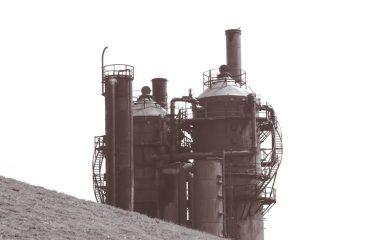“`html
Steel, the backbone of modern infrastructure and countless industries, demands rigorous quality control throughout its production. From the initial smelting process to the final product, adherence to stringent quality standards is paramount. This comprehensive guide delves into the key aspects that ensure the consistent production of high-quality steel, fulfilling diverse industrial needs and maintaining safety and reliability.
1. Chemical Composition: The Foundation of Steel Quality
The chemical composition of steel dictates its inherent properties. Variations in the percentages of carbon, manganese, silicon, phosphorus, sulfur, and other alloying elements significantly impact the steel’s strength, hardness, ductility, weldability, and machinability. Standards like ASTM (American Society for Testing and Materials) and ISO (International Organization for Standardization) define acceptable ranges for these elements depending on the intended application of the steel. For instance, high-carbon steel, used in tools and cutting instruments, requires a much higher carbon content than mild steel used in construction. Precise control over the chemical composition is achieved through careful selection of raw materials, precise alloying additions during the steelmaking process, and rigorous laboratory analysis using techniques such as spectroscopy and chemical analysis.
2. Mechanical Properties: Measuring Steel’s Performance
Beyond its chemical makeup, the mechanical properties of steel are critical to its performance. These properties, including tensile strength, yield strength, elongation, hardness, and impact resistance, are determined through standardized testing methods. Tensile testing, for example, measures the steel’s ability to withstand tensile forces before fracture, providing crucial data on its strength and ductility. Hardness testing, using methods like Rockwell or Brinell, assesses the steel’s resistance to indentation, indicating its wear resistance. Impact testing, such as Charpy or Izod, evaluates the steel’s ability to absorb energy upon impact, vital for applications in cold climates or where sudden shocks are expected. These tests are conducted at various stages of steel production and are documented to ensure compliance with specified standards and customer requirements.
3. Non-Destructive Testing (NDT): Ensuring Internal Integrity
While destructive testing provides crucial data, non-destructive testing (NDT) methods are employed to evaluate the integrity of the steel without damaging the material. NDT techniques, such as ultrasonic testing (UT), radiographic testing (RT), magnetic particle inspection (MPI), and liquid penetrant inspection (LPI), detect internal flaws like cracks, porosity, and inclusions that could compromise the steel’s strength and reliability. These methods are crucial for ensuring the quality of finished products and for identifying potential defects early in the manufacturing process, preventing costly rework or product recalls. The choice of NDT method depends on the type of steel, its thickness, and the specific defects being sought.
4. Traceability and Certification: Maintaining Accountability
Maintaining a comprehensive and accurate record of the steel’s production process is crucial for traceability and certification. This involves meticulous documentation of the raw materials used, the manufacturing processes employed, the test results obtained, and the final product specifications. This detailed record allows for the identification of any potential issues and facilitates corrective actions if necessary. Furthermore, independent certification bodies, such as those accredited by ISO, verify the steel’s compliance with relevant standards and issue certificates of conformity, providing assurance to customers regarding the quality and reliability of the product. This traceability and certification process is integral to building trust and maintaining a strong reputation within the steel industry.
5. Continuous Improvement and Technological Advancements
The pursuit of higher quality standards in steel production is an ongoing process. Continuous improvement initiatives, driven by technological advancements, play a pivotal role in enhancing efficiency and minimizing defects. Advanced process control systems, utilizing real-time data analysis and automation, optimize the steelmaking process, ensuring consistent chemical composition and mechanical properties. The development and implementation of new steel grades with enhanced performance characteristics, tailored to specific applications, are also crucial to meeting the ever-evolving demands of various industries. Furthermore, research into new and improved testing techniques contributes to more accurate and efficient quality control methods.
In conclusion, the pursuit of excellence in steel production relies on a multifaceted approach encompassing precise chemical control, rigorous mechanical testing, non-destructive evaluation, comprehensive traceability, and a commitment to continuous improvement. By adhering to these quality standards, the steel industry ensures the production of reliable, high-performance materials vital for countless applications, underpinning safety and progress across diverse sectors.
Tags: Steel quality standards, steel production, ISO standards, steel testing, mechanical properties of steel
“`




